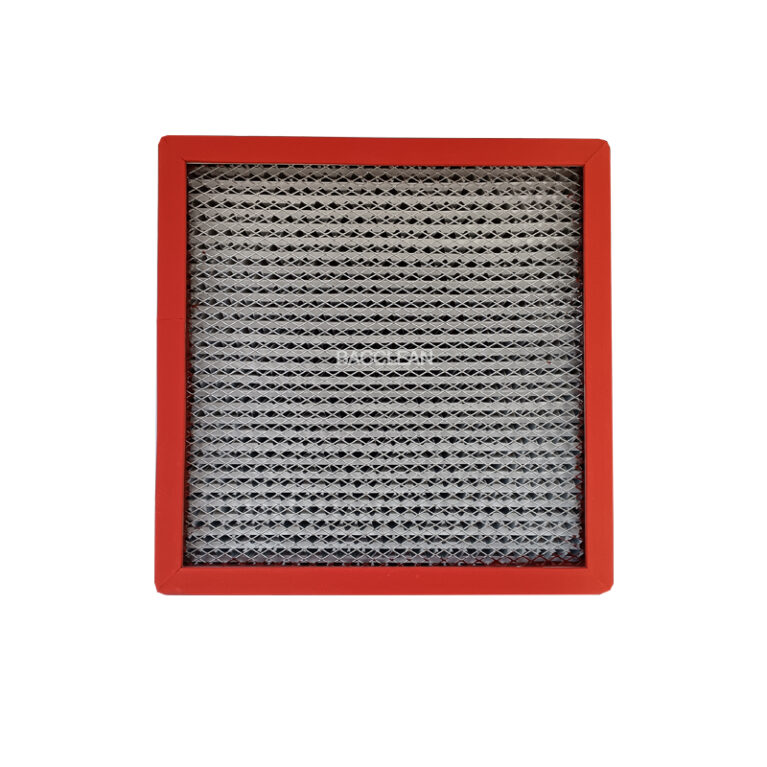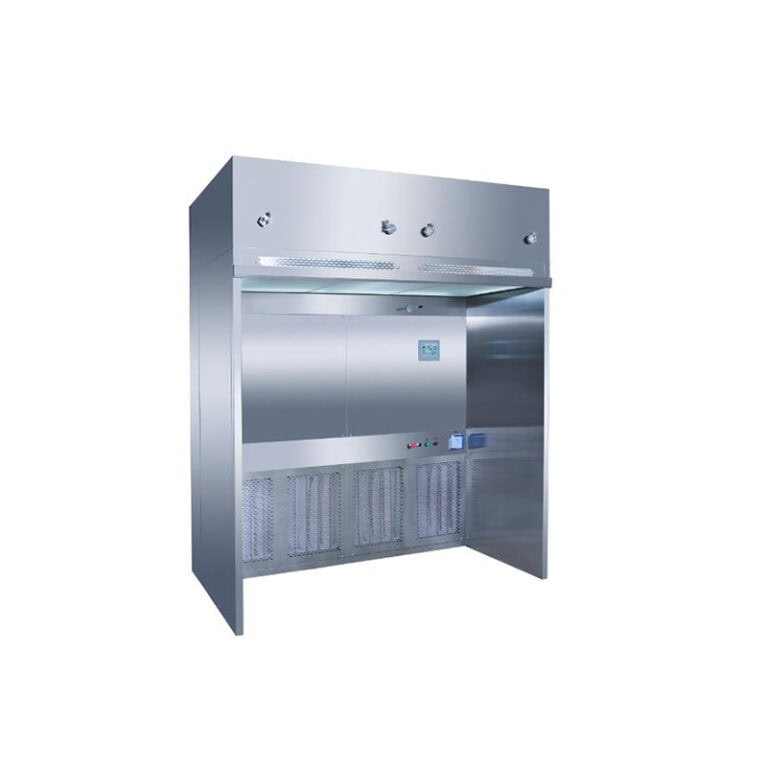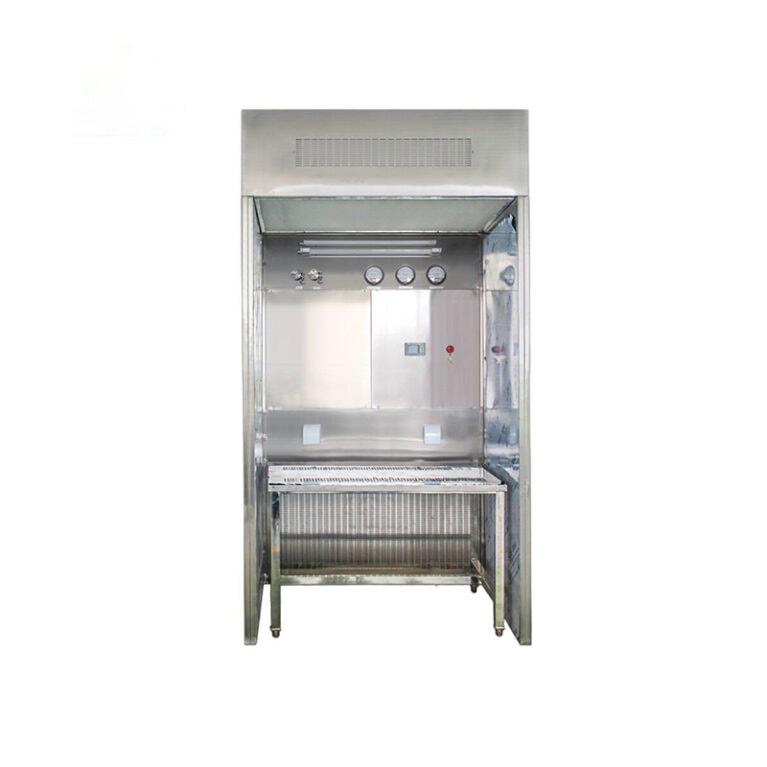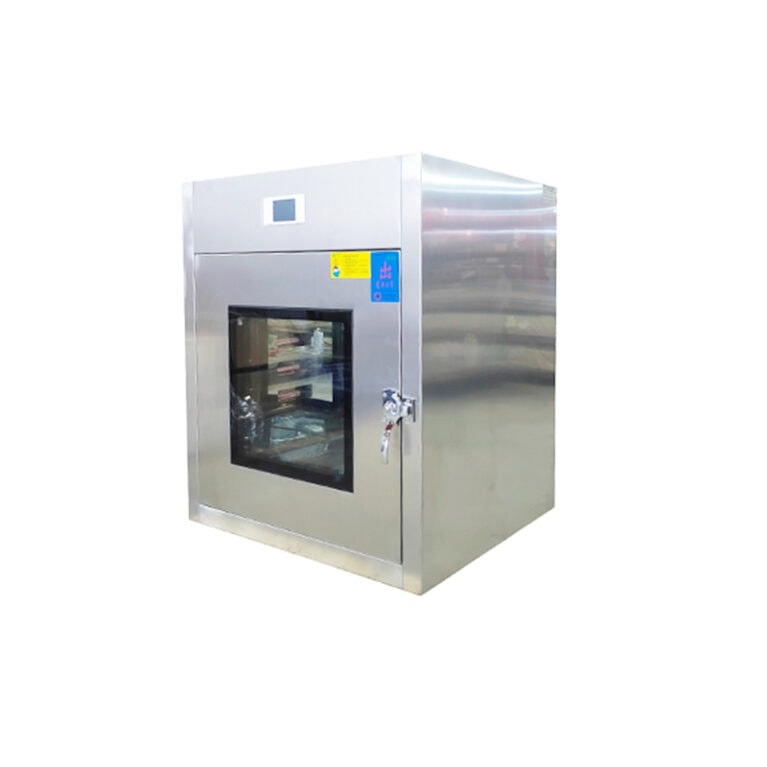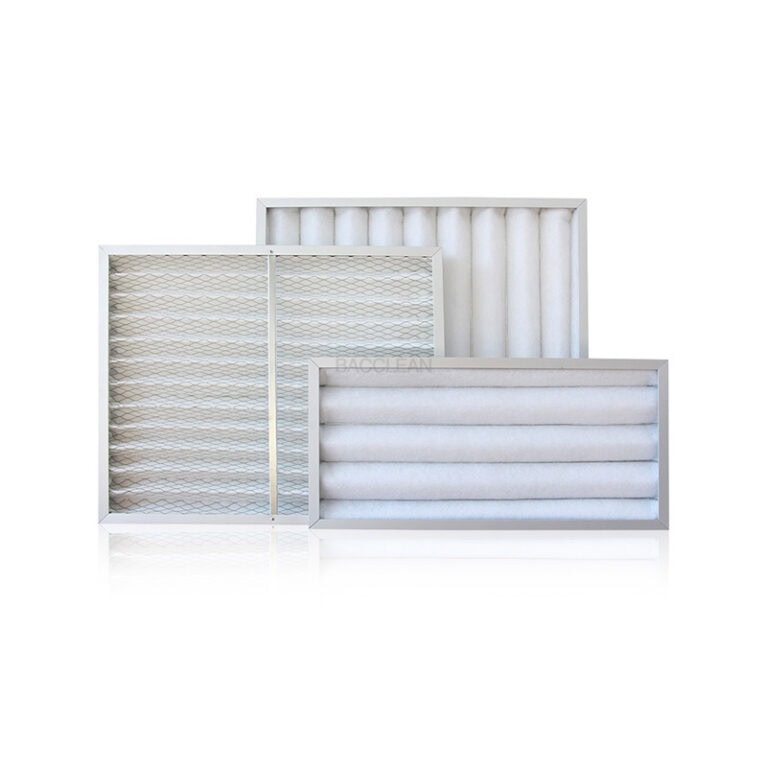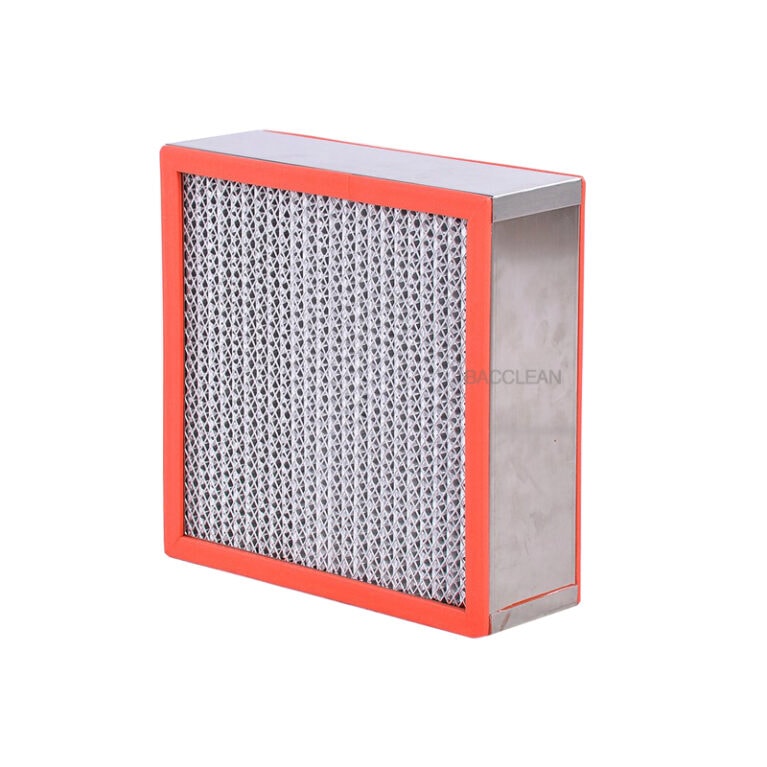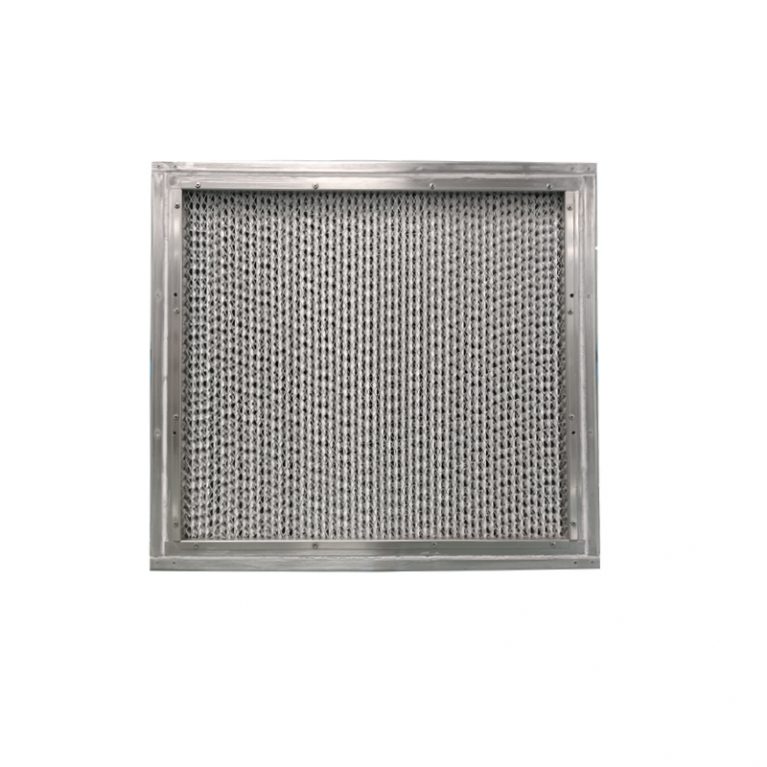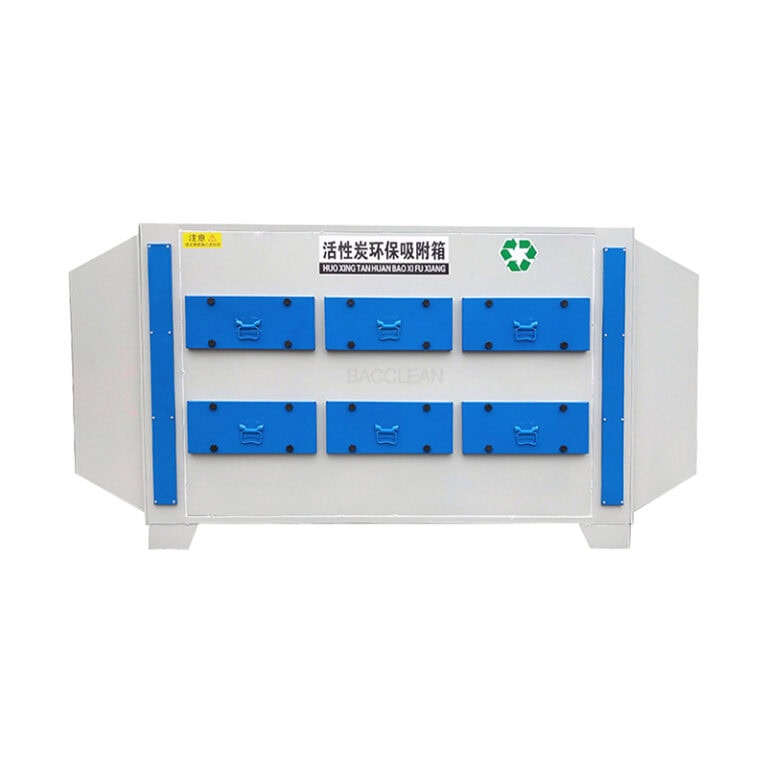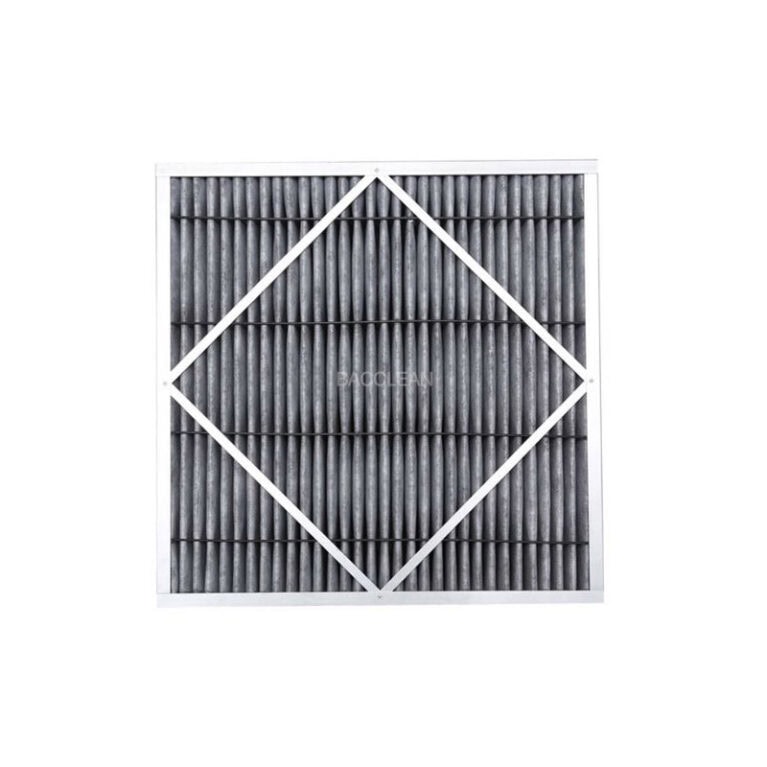The spray disinfection air shower is a device that combines air purification and spray disinfection functions. It is mainly used for surface disinfection of personnel or items in clean areas such as laboratories, food processing plants, and pharmaceutical workshops to prevent pollutants from entering the clean area. Its working principle can be divided into two core links: air filtration and purification, and spray disinfection. The details are as follows:
I. Basic Structure and Core Components
Spray disinfection air shower rooms are usually composed of the following parts:
Closed cavity (inlet and outlet channels);
High-efficiency air filters (HEPA or ULPA);
Fan and air duct system;
Spray disinfection device (including disinfectant storage tank, atomizing nozzle, pipeline, control system);
Sensing devices (such as infrared sensors, photoelectric switches);
Control panel (for controlling running time, disinfection mode, etc.).
Ii. Work Process and Principles
1. Entry and activation of personnel/items
When personnel or items enter the air shower through the entrance, the sensing device (such as an infrared sensor) detects the object, automatically closes the entrance door, and initiates the disinfection program (it can also be triggered manually). At this point, the exit door is locked to ensure that the cavity is sealed during the disinfection process, preventing the leakage of disinfectant or the outflow of undisinfected air.
2. Air filtration and purification (air shower section)
The fan draws external air into the air duct, which first passes through a primary filter (such as a nylon mesh) to remove large particles of dust (with a diameter of ≥5μm).
The filtered air enters the high-efficiency filter (HEPA) to further remove tiny particles (with a diameter of ≥0.3μm and a filtration efficiency of over 99.97%), ensuring that the air entering the cavity is clean.
Clean air is ejected at high speed through nozzles on both sides or at the top of the cavity (with a wind speed usually ranging from 20 to 30m/s), forming a strong airflow that blows off dust, hair, and other particles adhering to the surface of personnel’s clothing or items. These pollutants are drawn into the return air outlet along with the airflow and re-enter the filtration system for circulation and purification.
3. Spray disinfection stage
At the same time or after the air shower dust removal, the spray device is activated: disinfectants (such as hydrogen peroxide, hypochlorous acid, alcohol, etc.) are transformed into tiny droplets (with diameters typically ranging from 5 to 50μm) through a high-pressure pump or ultrasonic atomizer.
The droplets are evenly sprayed through multiple nozzles distributed inside the cavity (usually located at the top or sides), covering the entire body of personnel (including clothing, hands, and shoe soles) or the surface of objects.
The droplets come into full contact with microorganisms (bacteria, viruses, fungi, etc.) and kill or inhibit the reproduction of microorganisms by destroying their cell membranes, proteins, or nucleic acids.
The disinfection time can be set according to requirements (usually 10 to 60 seconds) to ensure that the disinfectant reacts fully with the microorganisms.
4. Ventilation and residue treatment
After the disinfection is completed, the spray device stops, but the fan continues to run for some time (usually 30 seconds to 2 minutes). The residual disinfectant droplets in the chamber are replaced by clean air filtered by high efficiency, reducing the inhalation of personnel or the residue of items. Some equipment is also equipped with an exhaust system to expel the air containing residual disinfectants to the outside or carry out harmless treatment.
5. Program termination and exit opening
After the ventilation is completed, the exit door will automatically unlock, and personnel or items can leave the air shower room and enter the clean area. The entrance door is unlocked simultaneously, waiting for the next use.
Iii. Core Advantages
Dual purification: Combining physical air spray dust removal and chemical spray disinfection, it not only removes particulate matter but also kills microorganisms, achieving a more thorough purification effect.
Automation control: Through sensing devices and program control, unattended operation is achieved, reducing human operational errors.
Wide applicability: Different disinfectants can be selected according to various scenarios to meet the hygiene standards of different industries, including food, medicine, and laboratories.
The spray disinfection air shower room effectively reduces the pollution risk in the clean area through the process of “dust removal first, then disinfection, and finally purification”, and is an important equipment for clean environment protection.
